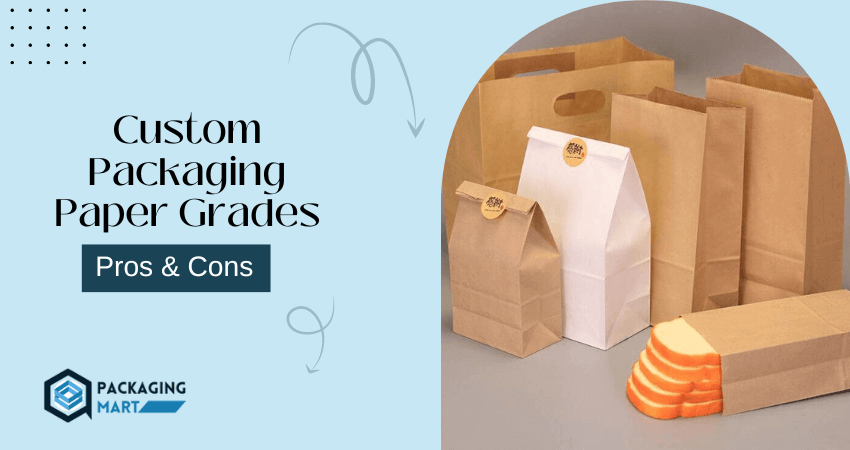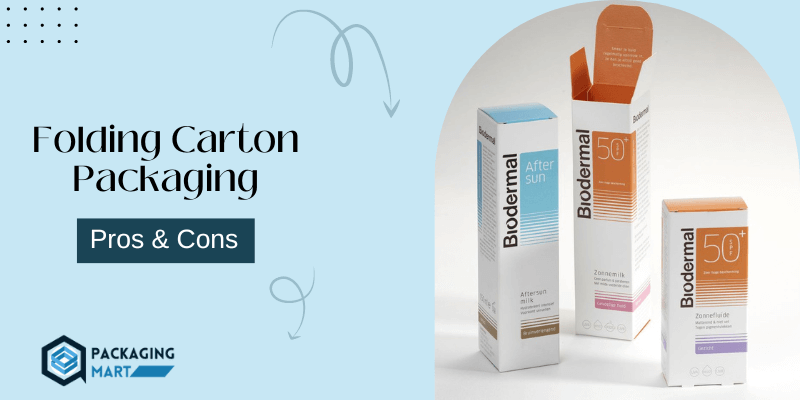Do you have a project involving packaging solutions and want to understand the different types of paper grades available? Are you unsure which is better suited for your needs? With so many options in today’s market, it can be confusing. Understanding the four most common grades will help you make an informed decision.
In this blog post, we’ll take a closer look at four of the most common types of paper grades used in packaging. You will also learn about their uses and what factors you should consider when choosing a paper grade for your product packaging.
So strap yourself in; it’s time to start exploring the world of paper grades!
4 Types of Paper Grades in Packaging
The four most popular types of paper grades used in packaging are
1) Clay-coated news back
Clay-coated news back is the most common grade of paper used in custom packaging boxes manufacturing. It offers a smooth surface that can be printed and is resistant to moisture and oils. It is also lightweight and economical. It can be used for interior and exterior packaging, as well as for labels, shipping materials and more.
2) Solid bleached sulfate
Solid bleached sulfate is a grade of paper with a high brightness level and gloss finish. It offers excellent printing capabilities with minimal show-through on both sides of the page.
It is also resistant to tearing, folding and curling. Solid bleached sulfate is ideal for high-quality books and magazines, as well as posters and other printed materials that need a glossy finish.
3) Folding box board
Folding box board is a sturdy and heavy-duty paper grade that provides superior strength and durability. It is also resistant to tearing, folding and curling. This makes it an ideal choice for packaging products such as food and beverages, as well as other items that require protection during shipping or storage.
4) Natural Kraft or coated unbleached Kraft
Natural Kraft and coated unbleached Kraft are both paper grades that offer an earthy look and feel. Natural Kraft is usually used for products such as gift boxes or gourmet food items, while coated unbleached Kraft is best suited for labels and other printed materials. Both of these paper grades are strong and provide excellent printing capabilities.
How can you determine which grade of paper is best for your product or packaging needs?
The grade of paper needed for the product and packaging will depend on the intended use.
1) Determine the application
The first step is to determine what the intended use of your paper grade will be. Will it be used for packaging, labels, printed materials or something else? Knowing this will help you narrow down which type of paper grade would best suit your needs.
2) Analyze cost and performance
Once you have determined the application, it is important to consider cost and performance. Different grades of paper have different costs associated with them, so you should make sure that your choice fits within your budget. Additionally, you should consider how well the paper grade will perform for the intended use.
3) Compare features
Finally, comparing the features of different paper grades is a good idea. Consider things like weight, brightness, gloss level and other characteristics that may be important for your application.
This will help you determine which paper grade is best for your product or packaging needs. Considering these factors, you can find the right paper grade for your specific needs.
What factors should you consider when choosing a paper grade for your product or packaging application?
When choosing a paper grade for your product or packaging application, there are several factors to consider.
- The most important factor is the type of product you’re packaging and the purpose of your packaging will determine which paper grade you should use.
- Additionally, you should consider the environment in which the product or package will be stored. If your product needs to endure extreme temperatures, moisture levels and other elements of nature, then a paper grade with special protective properties may be required.
- You should also determine if you need extra strength for your product or package to ensure it reaches its destination safely. Different paper grades provide varying levels of strength and durability, so consider what type of protection your product will need before selecting a paper grade.
- Finally, cost-effectiveness is an important factor when selecting a paper grade that meets your needs. Consider the performance requirements as well as the cost of each paper grade before making your decision.
By taking all these factors into account, you can ensure that the paper grade you choose will meet the needs of your product or packaging application.
Are there any environmental considerations to take into account when choosing a paper grade for your product or packaging application?
Absolutely. The paper grade you choose will have an impact on the sustainability of your product or packaging. Consider choosing a recycled or FSC-certified paper, which is made from responsibly sourced materials and helps reduce deforestation and promote responsible forestry management. Additionally, look for papers that are chlorine-free, as chlorine bleaching can leave harmful chemicals in the paper.
Finally, choose a paper grade that is biodegradable, to reduce the amount of waste in landfills. By taking all these factors into account, you can make an informed decision and ensure your product or packaging is both sustainable and eco-friendly.
Conclusion
Armed with this knowledge, you can make smarter decisions when it comes to purchasing packaging for your products. If you need help selecting the right type of paper or material for your product packaging, you will also reach out to a local print shop or specialist.
They will be able to guide you in the right direction and ensure that you are getting the best bang for your buck. Hopefully, this information will be useful as you select the best possible packaging for your products.


